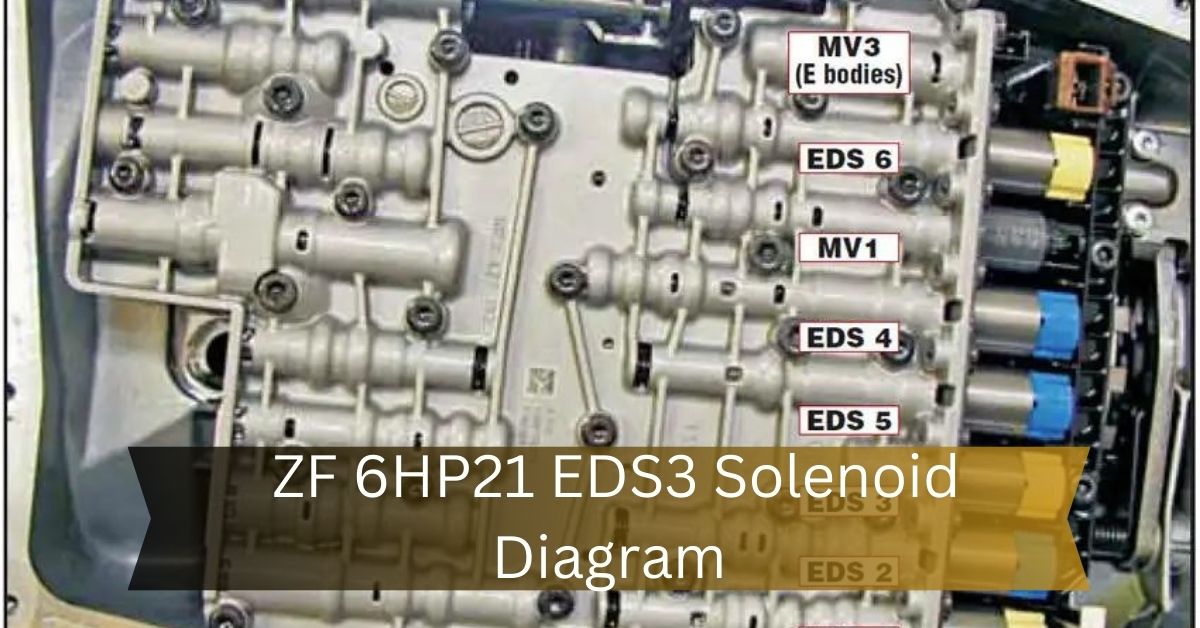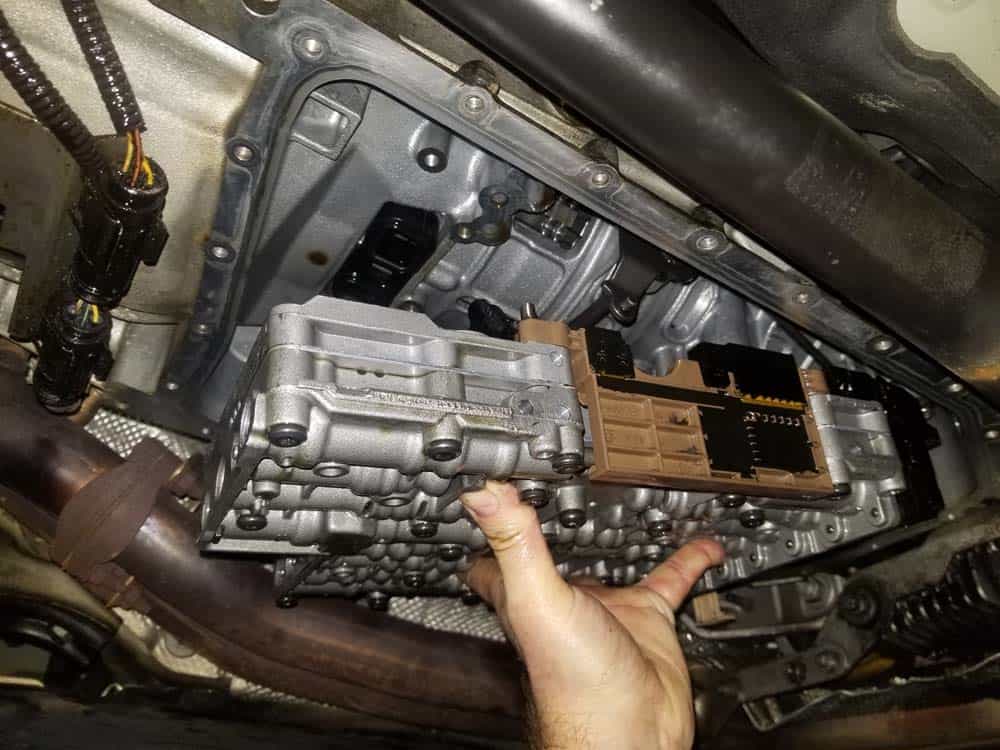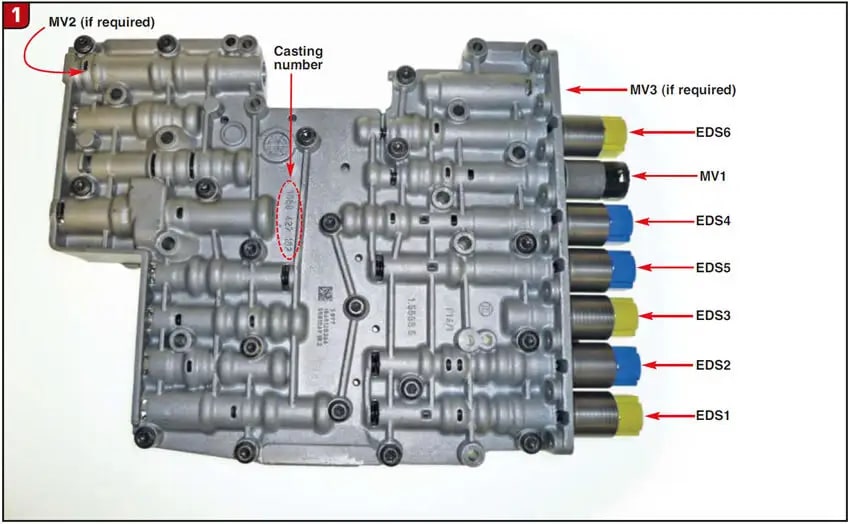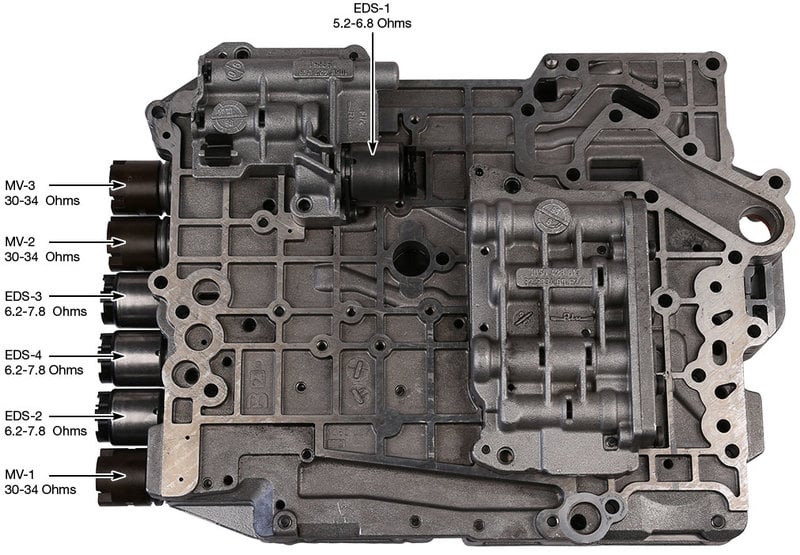
The ZF 6HP21 transmission is a renowned component in the automotive industry, known for its smooth performance, efficiency, and reliability. Central to its operation is the EDS3 solenoid, a vital component that controls the flow of transmission fluid, ensuring that gear shifts are smooth and precise.
In this article, we will delve into the ZF 6HP21 EDS3 solenoid diagram, exploring its significance, components, and functioning within the transmission system.
What is the ZF 6HP21 EDS3 Solenoid Diagram?
The ZF 6HP21 EDS3 solenoid diagram is a technical illustration that shows the arrangement and connections of the EDS3 solenoid within the transmission system.
The ZF 6HP21 transmission is a 6-speed automatic gearbox developed by ZF Friedrichshafen AG, designed to provide a balance of performance, comfort, and fuel efficiency. This transmission is widely used in various luxury and high-performance vehicles, making it a crucial component for many automakers.
Key Features of the ZF 6HP21 Transmission:
- Six-Speed Gearbox: The ZF 6HP21 transmission offers a wide range of gears, allowing for improved acceleration and better fuel efficiency.
- Adaptive Transmission Control: This feature adjusts shifting patterns based on driving conditions and the driver’s behavior, ensuring optimal performance.
- Torque Converter: The torque converter in the ZF 6HP21 transmission helps smooth out power delivery, enhancing driving comfort.
- Hydraulic Control System: The hydraulic system manages gear shifts and clutch engagement through precise hydraulic pressure, controlled by the EDS3 solenoid.
Components of the ZF 6HP21 EDS3 Solenoid Diagram:

Understanding the components depicted in the ZF 6HP21 EDS3 solenoid diagram is crucial for anyone looking to comprehend how this transmission works. The key components include:
- EDS3 Solenoid: This solenoid controls the flow of transmission fluid within the hydraulic system, which in turn controls gear shifts.
- Hydraulic Valves: These valves are responsible for directing the flow of hydraulic fluid based on the solenoid’s signals.
- Transmission Control Unit (TCU): The TCU is the brain of the transmission, sending commands to the EDS3 solenoid to ensure precise gear changes.
- Transmission Fluid Channels: These channels allow the fluid to move between different components of the transmission system.
How the ZF 6HP21 EDS3 Solenoid Works?
The ZF 6HP21 EDS3 solenoid plays a pivotal role in the operation of the transmission. Here’s how it works:
- Signal Reception: The TCU sends electrical signals to the EDS3 solenoid based on driving conditions.
- Fluid Control: The EDS3 solenoid regulates the flow of transmission fluid to various hydraulic circuits.
- Gear Shifting: Based on the fluid flow controlled by the EDS3 solenoid, the transmission shifts gears smoothly and efficiently.
- Feedback Loop: The TCU monitors the transmission’s performance and adjusts the solenoid’s operation to maintain optimal performance.
Importance of the ZF 6HP21 EDS3 Solenoid Diagram:
The ZF 6HP21 EDS3 solenoid diagram is an essential tool for technicians and engineers working with this transmission. It provides a clear and detailed view of how the solenoid is integrated into the system, allowing for accurate diagnostics and repairs.
Understanding this diagram can help in identifying potential issues with the transmission, such as faulty solenoids or fluid flow problems.
Troubleshooting Using the ZF 6HP21 EDS3 Solenoid Diagram:
When troubleshooting transmission issues, the ZF 6HP21 EDS3 solenoid diagram can be invaluable. Common problems that may be identified using this diagram include:
- Erratic Shifting: If the transmission shifts unpredictably, the EDS3 solenoid may be malfunctioning, causing incorrect fluid flow.
- Delayed Engagement: Delays in gear engagement can indicate issues with the solenoid or the hydraulic system.
- Transmission Slippage: If the transmission slips out of gear, it could be due to a failure in the EDS3 solenoid’s control of the fluid pressure.
Maintenance and Repair of the ZF 6HP21 Transmission:
Regular maintenance of the ZF 6HP21 transmission is crucial to ensure its longevity and performance. This includes:
- Fluid Checks: Regularly checking and replacing transmission fluid can prevent issues with the EDS3 solenoid and other components.
- Diagnostic Scans: Using diagnostic tools to scan for error codes related to the EDS3 solenoid can help in early detection of problems.
- Component Inspection: Periodic inspection of the transmission components, guided by the ZF 6HP21 EDS3 solenoid diagram, can prevent major failures.
The Role of the EDS3 Solenoid in Transmission Fluid Management:
The ZF 6HP21 EDS3 solenoid is instrumental in managing the flow of transmission fluid throughout the system. This fluid is critical for the operation of various hydraulic components within the transmission.
The EDS3 solenoid modulates the fluid pressure and flow based on real-time demands from the Transmission Control Unit (TCU). This precise control ensures that the transmission operates smoothly and efficiently, optimizing gear shifts for both performance and fuel economy.
When the EDS3 solenoid fails or malfunctions, it can lead to inconsistent fluid pressure, which may cause rough shifting or erratic transmission behavior. Understanding the detailed workings of the EDS3 solenoid, as illustrated in the ZF 6HP21 EDS3 solenoid diagram, helps in diagnosing and rectifying such issues.
Differences Between EDS3 and Other Solenoids:
The ZF 6HP21 EDS3 solenoid is specifically designed for the 6HP21 transmission and differs significantly from solenoids used in other transmission models. While many solenoids control hydraulic pressure, the EDS3 solenoid is tailored to manage a complex system of multiple pressure circuits and shifting mechanisms.

Unlike simpler solenoids that may only control one aspect of the transmission, the EDS3 solenoid integrates multiple functions into a single unit. This makes it more versatile but also more complex.
The ZF 6HP21 EDS3 solenoid diagram highlights these differences by showing how the EDS3 solenoid interacts with various hydraulic paths and control circuits, making it a crucial component for understanding the transmission’s unique operational characteristics.
Impact of Environmental Factors on the EDS3 Solenoid:
Environmental factors can significantly impact the performance and longevity of the ZF 6HP21 EDS3 solenoid. Temperature fluctuations, moisture, and dirt ingress can all affect the solenoid’s functionality.
For instance, extreme temperatures can alter the viscosity of the transmission fluid, leading to improper solenoid operation. Moisture can cause electrical components within the solenoid to corrode, impacting performance. Dust and debris can clog fluid passages, affecting hydraulic pressure regulation.
The ZF 6HP21 EDS3 solenoid diagram provides insights into how environmental factors might influence the solenoid’s operation, helping technicians anticipate and address potential issues before they lead to transmission failure.
Advances in Solenoid Technology and Their Relevance:
Advancements in solenoid technology have led to improvements in the design and functionality of components like the ZF 6HP21 EDS3 solenoid. Modern solenoids incorporate advanced materials and electronics that enhance durability and performance.
For example, newer solenoids might feature better sealing techniques to prevent fluid leaks and advanced coil designs for more precise control. These improvements not only extend the lifespan of the solenoid but also contribute to better overall transmission performance.
The ZF 6HP21 EDS3 solenoid diagram reflects these technological advancements by illustrating updated component designs and connections, which can be crucial for understanding how contemporary solenoids differ from older models and how these differences impact transmission efficiency and reliability.
Diagnosing Electrical Issues in the EDS3 Solenoid:
Electrical issues in the ZF 6HP21 EDS3 solenoid can be challenging to diagnose but are crucial for maintaining proper transmission function. The EDS3 solenoid operates based on electrical signals sent by the Transmission Control Unit (TCU).
Any disruption in these signals, such as voltage drops or short circuits, can lead to malfunctioning solenoid behavior. The ZF 6HP21 EDS3 solenoid diagram is essential for understanding the electrical circuit connections and pinpointing where electrical issues might arise.
For instance, if the solenoid does not receive the correct signal, it may fail to regulate fluid pressure properly, resulting in erratic shifting or slipping gears. Technicians can use diagnostic tools to check the electrical continuity and signal strength, referring to the diagram to ensure all connections are intact and functioning correctly.
Interaction Between EDS3 Solenoid and Transmission Sensors:
The ZF 6HP21 EDS3 solenoid works in conjunction with various transmission sensors to ensure accurate operation. Sensors like the speed sensor and temperature sensor provide critical data to the TCU, which in turn controls the EDS3 solenoid’s function.
For example, the speed sensor monitors the vehicle’s speed and informs the TCU, which adjusts the solenoid’s fluid flow to match the required shift points. The ZF 6HP21 EDS3 solenoid diagram illustrates how these sensors interface with the solenoid and the transmission’s hydraulic system.
Understanding this interaction helps in diagnosing issues related to incorrect fluid flow or shifting problems that may arise from faulty sensors or improper sensor calibration.
Maintenance Protocols for the EDS3 Solenoid:
Proper maintenance of the ZF 6HP21 EDS3 solenoid is crucial for ensuring the longevity and performance of the transmission. Regular maintenance tasks include inspecting the solenoid for signs of wear, checking the fluid level and quality, and ensuring that all hydraulic lines are clear and unobstructed.

The ZF 6HP21 EDS3 solenoid diagram can guide technicians in performing these maintenance tasks by showing the location of critical components and fluid pathways. Additionally, regular fluid changes can prevent contamination that might affect solenoid performance.
Adhering to manufacturer-recommended maintenance schedules and procedures helps prevent premature solenoid failure and prolongs the overall life of the transmission system.
Upgrades and Replacements for the EDS3 Solenoid:
When replacing or upgrading the ZF 6HP21 EDS3 solenoid, it’s essential to consider the compatibility and specifications to ensure optimal performance. Upgraded solenoids may offer improved performance features, such as enhanced durability or better response times.
The ZF 6HP21 EDS3 solenoid diagram is invaluable during this process, as it provides precise details on the solenoid’s dimensions, mounting points, and hydraulic connections. Technicians must ensure that any replacement solenoid matches the specifications of the original to avoid issues like improper fluid flow or incorrect shifting.
Additionally, understanding the differences between original and aftermarket solenoids can help in selecting high-quality replacements that maintain or enhance the transmission’s performance.
Conclusion:
The ZF 6HP21 EDS3 solenoid diagram is more than just a technical illustration; it’s a roadmap to understanding the intricate workings of the ZF 6HP21 transmission. By mastering this diagram, technicians and engineers can ensure that this sophisticated transmission system continues to deliver the smooth, efficient performance that drivers expect. Whether you are troubleshooting an issue or performing routine maintenance, the ZF 6HP21 EDS3 solenoid diagram is an essential tool in your arsenal.